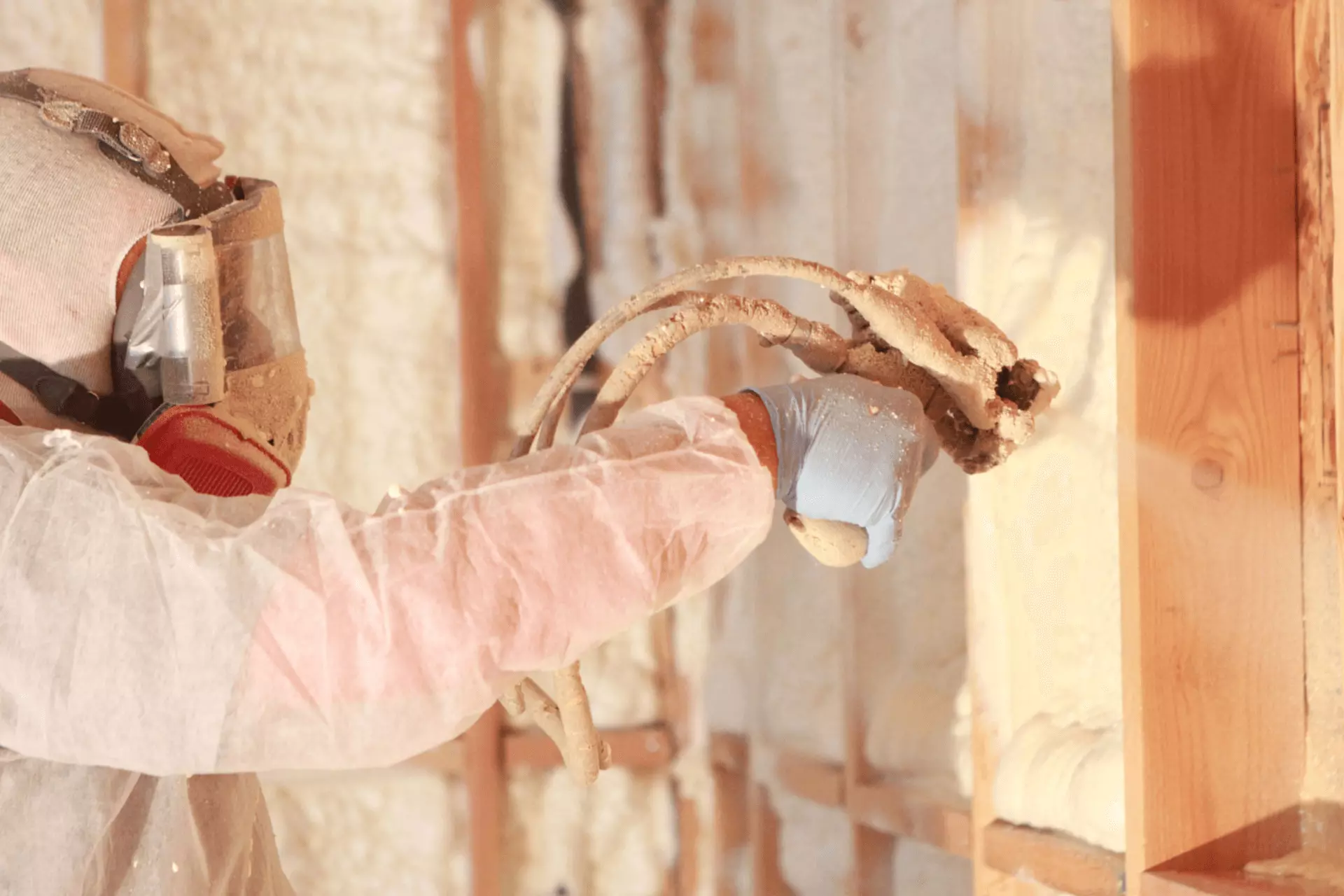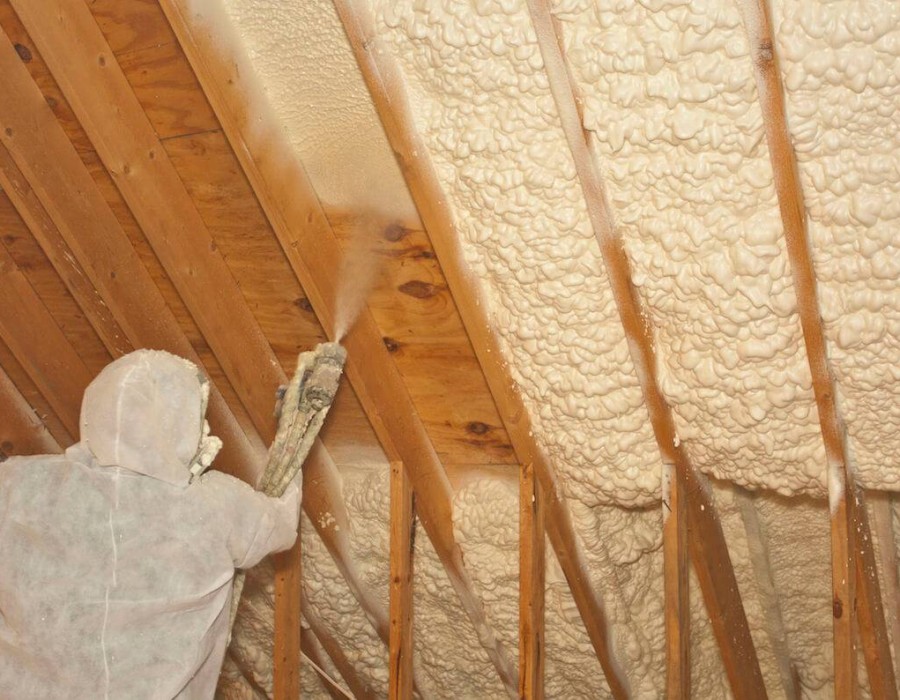Beyond its well-known insulating power, spray foam offers several useful features that make a real difference in a building's performance and comfort. The most significant are its ability to create a complete air seal, act as a powerful moisture barrier, add structural integrity to walls and roofs, and effectively dampen sound. While traditional insulation can fill a space, spray foam becomes part of the structure, sealing it from the outside elements in a way other materials can't. These combined benefits are what solve common building problems like drafts, high energy bills, moisture issues, and noise pollution.
This guide, with input from seasoned spray foam insulation professionals, explores these practical features. They directly address some of the most common and costly problems property owners face, from high energy bills to moisture damage.
The Power of a Complete Air Seal
The single most impactful feature of spray foam insulation is its ability to form a continuous air barrier. When applied, the liquid expands to fill every crack, gap, and seam in the building envelope. This stops air leakage, a major source of energy waste in both residential and commercial buildings. Data suggests that uncontrolled air leakage can account for as much as 40% of the energy used for heating and cooling a typical home.
Traditional insulation like fiberglass batts or blown-in cellulose can't achieve this level of air sealing on their own. Gaps are often left around electrical outlets, plumbing lines, and framing joints. Conditioned air escapes through these gaps in the winter, and hot, humid air infiltrates in the summer. Spray foam eliminates this problem by creating a single, unbroken layer of protection, which keeps the indoor air in and the outdoor air out. This directly translates to more stable indoor temperatures and lower utility bills.
- Bonus Tip: A simple way to understand air leakage is to feel for drafts around window frames and exterior doors on a windy day. Spray foam addresses similar, less obvious gaps throughout the entire structure.
Stopping Moisture in Its Tracks
Another key feature, particularly with closed-cell spray foam, is its function as a moisture barrier. Closed-cell foam has a dense, compact cell structure that is impermeable to water and water vapor. When applied to surfaces like basement walls or the underside of a roof deck, it effectively stops moisture from passing through the building assembly.
This is especially important in regions with high humidity, like Kentucky and much of the Midwest. In these climates, warm, moist air can be drawn into crawl spaces and attics. When this moisture condenses on cooler surfaces, it can lead to mold, mildew, and wood rot. Closed-cell spray foam prevents this by blocking the moisture before it can enter the space. This feature not only protects the health of the occupants but also preserves the structural materials of the building itself.

Adding Strength to Your Structure
In addition to sealing and insulating, closed-cell spray foam also contributes to a building's structural strength. Because it's a dense, rigid material that adheres tenaciously to the surfaces it's applied to, it essentially glues the building components together. When applied inside a wall cavity, it bonds the sheathing to the studs, creating a much stronger and more rigid wall assembly.
Independent lab tests have shown that walls insulated with closed-cell spray foam can have significantly higher racking strength than walls with traditional insulation. This means they are better able to resist lateral forces from high winds, which is a big advantage in areas prone to severe storms. While it doesn't replace the need for proper structural bracing, this added rigidity contributes to the overall durability and resilience of the building.
Comparing Insulation on Key Features
This table shows how spray foam stacks up against traditional insulation on these important secondary benefits.
Creating a Quieter Indoor Environment
While closed-cell foam is known for its strength, open-cell spray foam excels at sound absorption. Its soft, flexible cell structure is very effective at trapping and dampening sound waves. This makes it an excellent choice for reducing noise transfer within a building or from the outside.
It's often used in interior walls around home theaters, offices, nurseries, and laundry rooms to create quieter, more private spaces. It can also be applied to exterior walls or in floor systems to reduce noise from traffic, neighbors, or activity in other parts of the house. This acoustic control adds a level of comfort that goes beyond just thermal performance.
- Bonus Tip: When planning a new build or a major remodel, consider using open-cell foam in specific interior walls where sound separation is a priority. It's a cost-effective way to improve the daily living experience.
Things to Consider Before Making a Decision
The right choice of spray foam depends on the specific goals of your project.
- Primary Goal: Are you mainly trying to lower energy bills? The air seal is the most important feature. Is a damp basement your main concern? Then the moisture barrier of closed-cell foam is what you need.
- Location of Application: For below-grade areas like crawl spaces or basements, the moisture-blocking and durable nature of closed-cell foam is essential. For soundproofing interior walls, an open-cell is the better tool for the job.
- Building Type: Metal buildings, for example, benefit immensely from closed-cell foam's ability to stop condensation. Older, drafty homes get the biggest boost from the air-sealing feature.
- Climate: In humid or very cold climates, the combined R-value and moisture management of closed-cell foam provide the most long-term value.
Questions People Ask About Spray Foam's Features
Does spray foam improve indoor air quality?
Yes, by creating a tight air seal, spray foam helps keep dust, pollen, and other outdoor pollutants from entering the building. This can lead to better indoor air quality, especially for people with allergies or asthma.
Will spray foam stop pests from getting in?
The solid barrier created by spray foam makes it much more difficult for insects and rodents to enter a building through small cracks and holes. While it's not a pesticide, it is an effective physical barrier.
Is spray foam fire-resistant?
Spray foam insulation products sold in the U.S. are required to contain a fire retardant. They are designed to char and self-extinguish when the flame source is removed. However, like most building materials, they are not fireproof and must be covered by a 15-minute thermal barrier, such as half-inch drywall, in living spaces.
Can spray foam be applied in an existing home?
Yes, this is called a retrofit application. It's commonly done in attics and crawl spaces. For finished walls, it's more invasive, as it requires either removing the drywall or using a specialized injection foam product.
Does the added structural strength really matter for a typical house?
For most modern homes built to code, it's an added bonus rather than a necessity. However, for older homes or in regions with high wind loads, this extra rigidity can provide a noticeable increase in the building's overall sturdiness and reduce creaks and groans during storms.
Weighing the Benefits for Your Building
The most useful features of spray foam insulation are the ones that work together to create a better building system. The air seal improves energy efficiency, the moisture barrier protects the structure, the added strength increases durability, and the sound control makes the space more pleasant. Looking past the R-value to these integrated benefits is the key to understanding the full value spray foam brings to a property. Because every building is different, the next step is to understand how these features apply to your specific situation.
Getting a Professional Assessment
The best way to know which spray foam features will have the biggest impact on a specific building is to have a professional evaluation. An experienced contractor can identify the primary sources of energy loss, moisture intrusion, or other issues. For property owners in Kentucky and nearby areas, the team at Armored Insulation provides on-site assessments to help people choose the right solution. They can be contacted for a consultation by calling (270) 727-5566 or by sending an email to [email protected].
Author: Jared Baker, Owner and Director of Business at Armored Insulation, brings deep local insight and strong business expertise to the company. He plays a key role in upholding the company’s focus on delivering top-tier service.
Reviewer: Mia Clark used her 9 years of experience in the spray foam industry to review this article and offered input focused on helping companies make their services easier to understand.





Comments